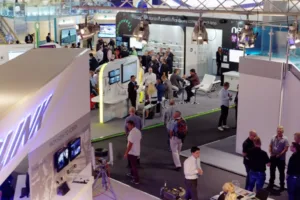This year, the organisers said that attendance at IBC was ahead of last year’s but a couple of people said to me that there seemed to be “less of a buzz” this year. Nevertheless, it was an interesting show.
UltraHD has clearly got enough impetus to work its way through the production chain. All the elements are in place and pay TV platforms will drive this. It looks as though it may be bad news for early adopters of UltraHD TVs, but in a couple of years, there will be some real and interesting content, especially around the Olympics in Brazil and the Euro Soccer Championships by 2016. By 2018, when the next World Cup comes around, the world will see “Better and Faster” pixels as well as more.
These developments are underpinned by HEVC which was everywhere at IBC. The codec seems to be really delivering on its promises, although real time encoding is still a challenge. What surprised me was the discussion of the use of HEVC for standard and high definition streams as well as UltraHD. A friend commented that he was “surprised that I was surprised”. It was really that I hadn’t thought about it – the relentless drive to offer more channels for less is clear.
HEVC seems also to work better when it is pushed harder than MPEG-2 or H.264 – it seems to degrade a little more gracefully. We expect to see HEVC roll out very quickly and, in Germany, there is a lot of interest in switching DTT to a model built on DVB-T2 with HEVC, perhaps as soon as 2016. This will allow a lot more HD channels.
OTT is really established and the challenge is to help the customer experience. We were impressed with the demos from Rovi of its “semantic” voice technology. We can also see that cloud technologies are becoming more and more important. Watch out for “white box” smartTV supplier NetRange starting to promote STBs in the cloud, an approach that we have been tracking for nearly five years by ActiveVideo.

